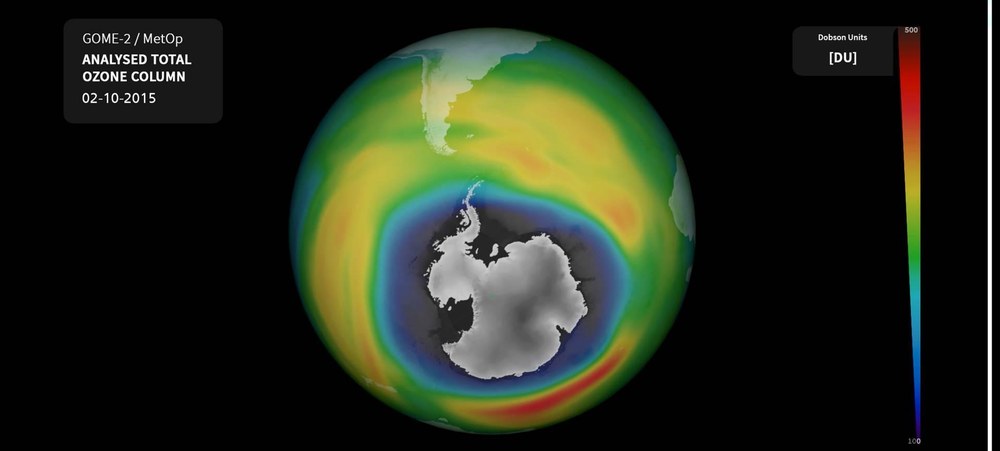Ozone hole nears record size again


The ozone hole over Antarctica currently extends over 26 million square kilometres – an area larger than the North American continent. Currently, it is approximately 2.5 million square kilometres larger than at the same time in 2014. In 2006 it was larger than now, at 27 million square kilometres. Researchers from the German Aerospace Center (Deutsches Zentrum für Luft- und Raumfahrt; DLR) Earth Observation Center (EOC) have discovered this trend using Earth observation satellites. They continuously monitor the protective ozone layer and analyse the changes they observe.
Intense ozone depletion over Antarctica is a phenomenon that recurs annually. In the stratosphere, at an altitude of between 10 and 50 kilometres, the concentration of chlorofluorocarbons (CFCs) becomes enriched while low temperatures prevail during the southern hemisphere winter. Now, in the southern hemisphere spring, additional sunlight causes these substances to exert their ozone-depleting effect. For this reason, the ozone hole reaches its maximum annual expansion during the spring months in the southern hemisphere and then reduces in size again in the local late spring. In recent years, the ozone hole appeared to have stabilised, suggesting a very gradual recovery of the ozone layer. This year, however, the ozone hole has formed one month later and is now almost as large as it was nine years ago.

The ozone hole over Antarctica nears its record
Your consent to the storage of data ('cookies') is required for the playback of this video on Youtube.com. You can view and change your current data storage settings at any time under privacy.
DLR
Altered air currents in the upper atmosphere
The current size of the ozone hole and its belated appearance surprised the atmospheric scientists at the DLR EOC, who, by analysing satellite data, observed changes in the air currents in the stratosphere, which are a possible cause of the size of the current ozone hole.
Circulation in the stratosphere is dominated by what are referred to as 'planetary waves', which also cause the exchange of air between the polar regions and the mid-latitudes. Michael Bittner, responsible for the World Data Center for Remote Sensing of the Atmosphere (WDC-RSAT) at the EOC, explains: "In August 2015, we observed an unusually strong southern flow, which directs warm and ozone-rich air masses from lower latitudes over Antarctica. The typical polar vortex, which provides isolation for Antarctica, could not develop well under these conditions." At the end of August, the situation changed abruptly – the intake of warm air masses stopped and there was a very quiet atmospheric phase. During this event, the polar vortex over Antarctica became stabilised in such a way that the enhanced ozone supply became degraded. A huge, almost circular ozone hole formed.
"This example shows the enormous importance of Earth observation –such large-scale change processes can only be observed and understood with satellites," says Stefan Dech, Director of the EOC. The scientists suspect that climate change is altering the behaviour of planetary waves. In this way, climate change is likely to have an impact on the ozone hole situation. The details are the subject of current research.
The DLR EOC has spent many years developing processes for highly accurate derivation of trace gas information from satellite data. At the same time, it operates the World Data Center for Remote Sensing of the Atmosphere (WDC-RSAT) and has developed methods for the early detection of climate signals in the atmosphere.
